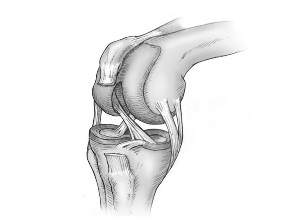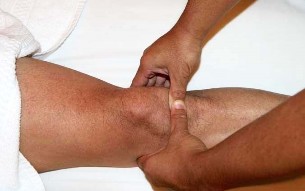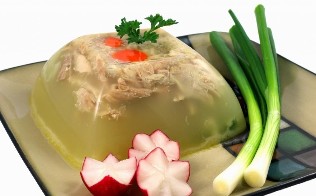Arthritis and arthrosis have a negative impact on the patient's life completely. When the signs of a described joint lesion appear, people make hasty conclusions. They can make mistakes, confusing the pathology shown. It is important to remember that the difference between arthritis and knee joint arthrosis is significant. Let us consider in more detail the characteristics of each disease. We will find out the difference, as well as how arthrosis differs from knee joint gonarthrosis.
Terminology Expansion
Arthritis and arthrosis are considered related words. Both mean joint damage. Because of the consonant term, patients often think of it as a synonym. This approach is incorrect. To find out how arthritis differs from arthrosis of the knee joint, you need to consider the features of each.
Arthrosis
Arthrosis is represented by joint deformation. Pathology is considered age-related. It is more common in elderly patients. It is also found in people under 40 years of age. More often, it occurs due to severe injuries to the joints, fractures. Risk groups are represented by athletes. Read more about knee joint arthrosis.Arthritis
Arthritis is an inflammatory pathology that develops in compounds. Typically, its occurrence is indicated by a deterioration of the connection function. The whole body is inflamed. The disease can spread to any joint. It can also include several connections at once. Learn more about knee arthritis.The difference between arthritis and arthrosis
The difference between arthritis and arthrosis is indicated by the nuance that immune failure is considered a provocative of inflammation. He can manifest himself:
- Stressful state;
- Hypothermia;
- Delayed flu.
Inflammation is provoked by infectious agents, metabolic disorders, and immune damage. With the increased function of the body's immune system, the immune system works against itself.
Signs of Arthritis
This joint pathology is indicated by major signs and additional signs. The main ones are:
- Joint pain. It is stronger, worse at night;
- Redness of the dermis at affected joints, swelling.
Additional signs of inflammatory disease are also observed:
- night sickness, manifested by complete rest;
- relieves pain when moving;
- morning stiffness. It passed after an hour;
- redness, swelling of the knee;
- attacks of severe pain in the knee area. They lasted for several days;
- presence of dense nodules under the skin;
- subfebrile temperature;
- swollen joints alternately;
- blisters on the dermis, redness. They show the development of reactive pathological forms;
- decreased appetite;
- weight loss.
Signs of arthrosis
The joint joint under consideration is continued with major and additional signs. Among the main ones are:
- Joint cramps;
- localization in the knee area;
- restricts connection movement;
- Pain occurs more frequently while moving. In quiet conditions, it rarely appears;
- joint deformation. Its appearance changes, the direction of the limbs can change;
- deterioration of blood supply, nutrition of joint tissue.
Specific manifestations are:
- The onset of pain at night;
- pain disappears at rest;
- NSAIDs do not relieve pain;
- painful pains;
- limited joint movement;
- excessive osteophyte growth.
Differences in major joint injuries

The main difference between arthrosis and arthritis is indicated by the fact that arthrosis is a pathology of the joint that damages and damages it. Arthritis affects the function of internal organs. The kidneys, heart, and liver suffer from this disease. When choosing a treatment, the doctor pays special attention to the internal organs.
To make it easier to differentiate diseases, we will explain them below.
| Pathological signs | Osteoarthritis | Arthritis/ zxtr>| Pain syndrome |
Usually appears after movement. Pain is also felt after hard work. People do not pay enough attention, thinking that pain evokes excessive joy. The disease persists and causes a painful sensation during light loads on the joints. The knees are also inconvenient on rest days, when the joints are not affected. In a comfortable position, the pain does not bother and subsides. |
With this pathology, pain is felt every second (with active physical activity, at work, in a calm state). The disease is characterized by night pain, which often interferes from 3 to 5 p. m. |
Crunch |
This is a feature of the defeat of this connection. Its occurrence is provoked by the destruction of the cartilage layer, bone friction. At the same time, certain sounds are heard (dry, rough). It increases with the development of the disease. |
| Decreased joint mobility |
Affected joints reduce range of motion. |
Joints, whole body, tied. |
Joint deformation |
Appears gradually on joints. If the disease worsens the type of pain. There is usually no swelling. |
Warp is also available. The affected joint area turns red, swollen. After pressing, acute pain is felt. Possible nodules. The temperature at the site of inflammation increases. |
Blood test results |
Osteoarthritis does not tend to affect blood test scores. Inflammation markers remain unchanged. |
This disease is characterized by an increase in ESR. Increased leukocyte levels indicate the course of inflammation in the joints. Biochemical analysis data show an increase in inflammatory markers. |
Localization |
Often glued to the knee joint. Less commonly, the disease includes the joints of the fingers, ankles. |
| |
Is there a difference between arthrosis and gonarthrosis of the knee joint? Gonarthrosis is an arthrosis that develops in the area of the knee joint. This pathology can be confused with a number of diseases:
- Meniscopathy.This is indicated by damage to the menisci. This pathology, blockage of the knee joint can be observed in patients of different ages, both sexes. Basically, a connection can be damaged. The difference from gonarthrosis is its rapid development. It is indicated by intense joint pain after running, jumping, walking. After 10 - 15 minutes. sharp pain passed.
- Coxarthrosis(hip joint arthrosis). This diagnosis can be made due to the reflection of pain in the area from the hip joint to the knee. It is easy enough to distinguish such a situation. With coxarthrosis, the movement of the knee joint does not change. It bends easily, painlessly. Doctors see a decrease in the ability to rotate the legs "from the hips". It is also difficult to spread the legs to the side.
- Vascular painis prominent in the knee. Pain may indicate poor circulation in the articular area of the knee. Such sensations are observed in adolescence. Currently, there is active growth. Vessels do not have time to grow as fast as bones. The pain in the pathology is symmetrical, it manifests itself in both limbs.
- Periarthritis. With inflammation of the knee tendons, pain is felt after carrying a heavy bag, after descending the stairs. Often, pathology is observed in women over 40 years of age. The pain did not extend to the entire knee. It feels just above the knee. Knee mobility is not limited.
Differential Diagnostics
With the described joint disease, the doctor instructs the patient to perform differential diagnosis. It is important to distinguish between arthritis and arthrosis. There are also a number of subtypes of arthritis. Osteoarthritis persists in several stages.
To distinguish these two pathologies from each other and from some other knee lesions, specify:
- X-ray compounds;
- blood biochemistry;
- rheumatic tests;
- CT;
- x-ray of the spine;
- MRI;
- bone scan.
Treatment of joint lesions
It is important to know what pathology you have been diagnosed with (arthrosis or arthritis of the knee joint) and not to be confused. Various approaches are used in the treatment of the intended disease.
Drugs in the treatment of arthrosis

In the treatment of arthrosis, doctors use medications (painkillers, hormone medications). they also use physiotherapeutic procedures, therapeutic exercises, massage. If the pathological case is very severe, drugs containing glucosamine sulfate are used. In some cases, surgery is required.
Therapy course for arthritis
Doctors choose a course of therapy for arthritis taking into account the form of the pathology. Patients should avoid physical improvement. plenty, excessive consumption of alcoholic beverages, unhealthy diet. Therapy is carried out with the use of drugs (non-steroidal anti-inflammatory drugs, antibiotics). To increase the effectiveness of the treatment carried out, physiotherapy procedures, exercise therapy are prescribed.
Prevention of joint pathology
To prevent the development of pathologies such as arthrosis or arthritis of the knee joint, it is necessary to listen to expert recommendations. As a precaution, you must adhere to the following conditions:
- Proper nutrition;
- Moderate physical load.

Each of these activities will be required even after treatment. Let's consider the characteristics of each.
Physical activity
They must be modest. Such exercise contributes to weight loss, strengthening the muscle fiber corset, and improving blood circulation. Each item is very important in the prevention of joint disease.
Heavy load on connection
Patients need to be careful. If you add load to the joint, accidentally injuring it, you will get the opposite effect. Instead of improving the situation, new problems will arise. It is also dangerous to do exercises from exercise therapy complexes. All classes should be conducted under the supervision of an instructor, attending physician.
Gymnastics joints
As a precautionary measure, it is sufficient to practice together. It's pretty common. It is easy to do. In addition, there is no need to buy special equipment. Particular attention should be paid to pool training. When performing any activity in the water, the load on the joints is minimal.
Proper nutrition
Doctors recommend reviewing your diet, options in food choices. For preventive purposes, doctors recommend not to include a number of products from the daily menu. Among them:
- Red Meat;
- Alcohol;
- Foods with high fat levels.
Must be included in the diet:
- Seafood;
- Fruit;
- Fish;
- Gelatin (it can be used as a jelly meat, jelly dessert);
- Vegetables

Drink 2-3 liters of water a day. Alcohol is excluded. You need to start taking vitamins: calcium, D, B, A.
Other precautions are:
- Weight control;
- Protection against joint hypothermia;
- Mandatory maintenance of a healthy lifestyle;
- Proper sleep, rest;
- Wear comfortable shoes. It is possible to use shoes with orthopedic soles, comfortable heels;
- Eliminates bad habits such as crossing the legs while sitting;
- Relieves stress.

















































